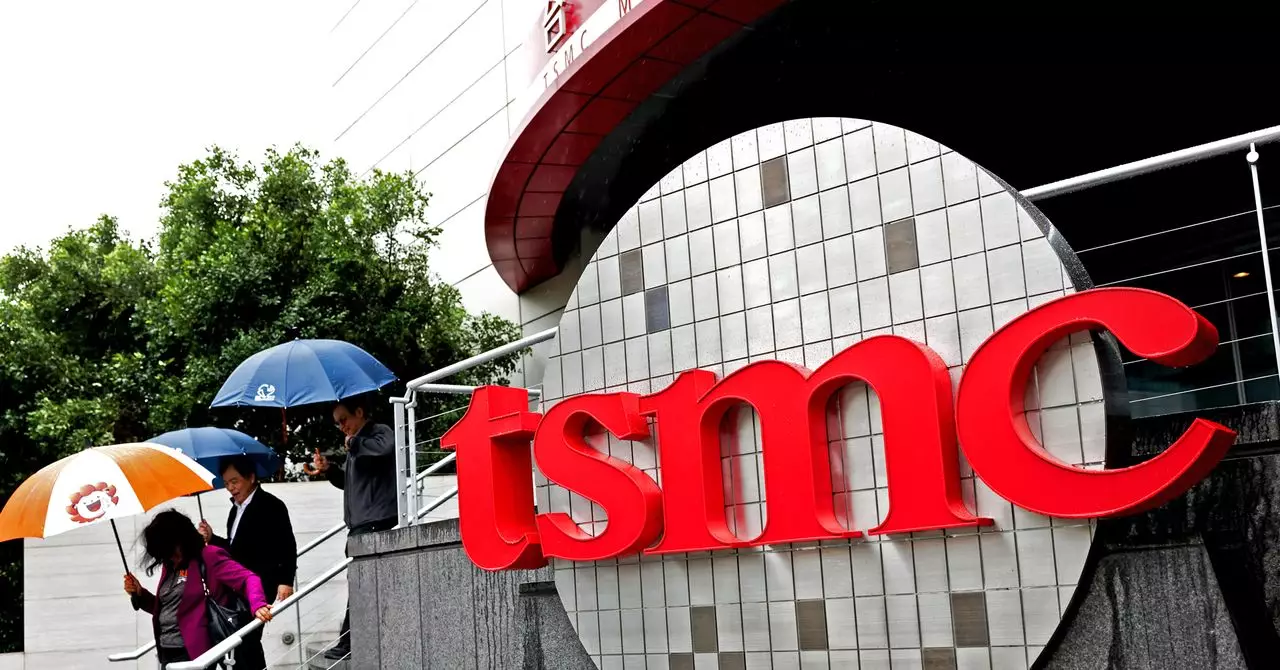The world of semiconductor manufacturing has become a battleground not just for technological superiority but also for economic strategy. At the center of this arena is Taiwan’s TSMC (Taiwan Semiconductor Manufacturing Company), the giant that produces an astounding 90% of the most advanced chips globally. As the U.S. government considers implementing tariffs to encourage domestic chip production, it raises crucial questions about labor costs, supply chain logistics, and the long-term viability of American manufacturing. Tariffs, while aimed at revitalizing local industries, could inadvertently drive companies to explore manufacturing options in third countries or further complicate an already intricate global supply chain.
The rationale behind tariffs is often to protect local industries by making it more expensive for foreign companies to operate in the U.S. However, the stark reality is that American labor costs are higher and the U.S. semiconductor supply chain lacks the sophistication seen in places like Taiwan. For tariffs to entice foreign companies like TSMC to relocate, the economics must fundamentally shift. Given the extended timeframe required to establish domestic production capabilities—years of investment and development—there’s an inherent risk that creating new manufacturing sites in the U.S. may not only take too long but may also fall short of profitability, leading to a significant financial burden on both the government and the companies involved.
In response, companies could find themselves considering alternative locations outside the U.S. to sidestep these tariffs. Rather than incentivizing production within American borders, tariffs could inadvertently ease the way for Taiwanese firms to set up shop in less regulated, cost-effective regions. This scenario presents a paradox: just when the U.S. hopes to assert its dominance in semiconductor manufacturing, it may find its policies inadvertently supporting the very global supply chains it seeks to limit.
The introduction of tariffs on components raises additional concerns regarding consumer products that contain these semiconductors. From smartphones to automobiles, the reliance on Taiwanese chips is pervasive. The implementation of tariffs would necessitate an exhaustive and cumbersome process of identifying and taxing components, putting a heavy strain on manufacturers. For instance, a single smartphone may contain dozens of chips, making the logistics of customs declaration a near impossibility. Companies would struggle to ascertain the exact tax obligations, effectively creating a chaotic environment that hinders product assembly and delivery.
Furthermore, this administrative complexity doesn’t just pose logistical challenges—it can also lead to increased costs that eventually trickle down to consumers. The market dynamics will shift dramatically as manufacturers scramble to comply with new tariff structures while maintaining competitive pricing. The need for precision will force companies like Apple to question their entire supply chain, potentially leading to delays and reduced consumer satisfaction.
In the backdrop of these tariffs lies a significant concern about national security and economic stability. The U.S. has been contemplating component tariffs aimed at curbing China’s semiconductor sector as part of broader strategic initiatives to reinforce its technological edge. However, implementing these tariffs against Taiwan could prove incredibly challenging. As market analysts suggest, Taiwan’s semiconductor industry plays a pivotal role, making it much more complicated to manage tariff enforcement effectively.
Instead of fulfilling their intended purpose, tariffs could trigger unexpected repercussions. The U.S. may find itself entangled in a web of geopolitical ramifications, as trade relationships with crucial partners become strained. The inherent complexities of the semiconductor supply chain mean that American policymakers must tread carefully, balancing national interests with the practical realities of global trade.
For colossal chip producers like TSMC, the implications of tariffs are comparatively muted. While price increases prompted by tariffs might lead some clients to seek alternative suppliers, the reality is that options are limited. Competitors like Samsung and Intel possess valuable capabilities in semiconductor manufacturing but lack the extensive history and specialization that TSMC offers in high-end chip production. For the most part, American companies like Nvidia or Apple will likely continue to rely on TSMC, absorbing heightened costs and passing them onto consumers, thus further validating TSMC’s dominant market position.
In light of these factors, the lobbying efforts by American giants may influence future tariff decisions. As these companies navigate the convoluted landscape of semiconductor provision and manufacturing, they are faced with an uncomfortable truth: the dependence on TSMC is a double-edged sword. In this rapidly shifting landscape, the long-term outcomes of such tariffs remain uncertain, raising critical questions about how the U.S. will foster a sustainable semiconductor industry while navigating global complexities.

